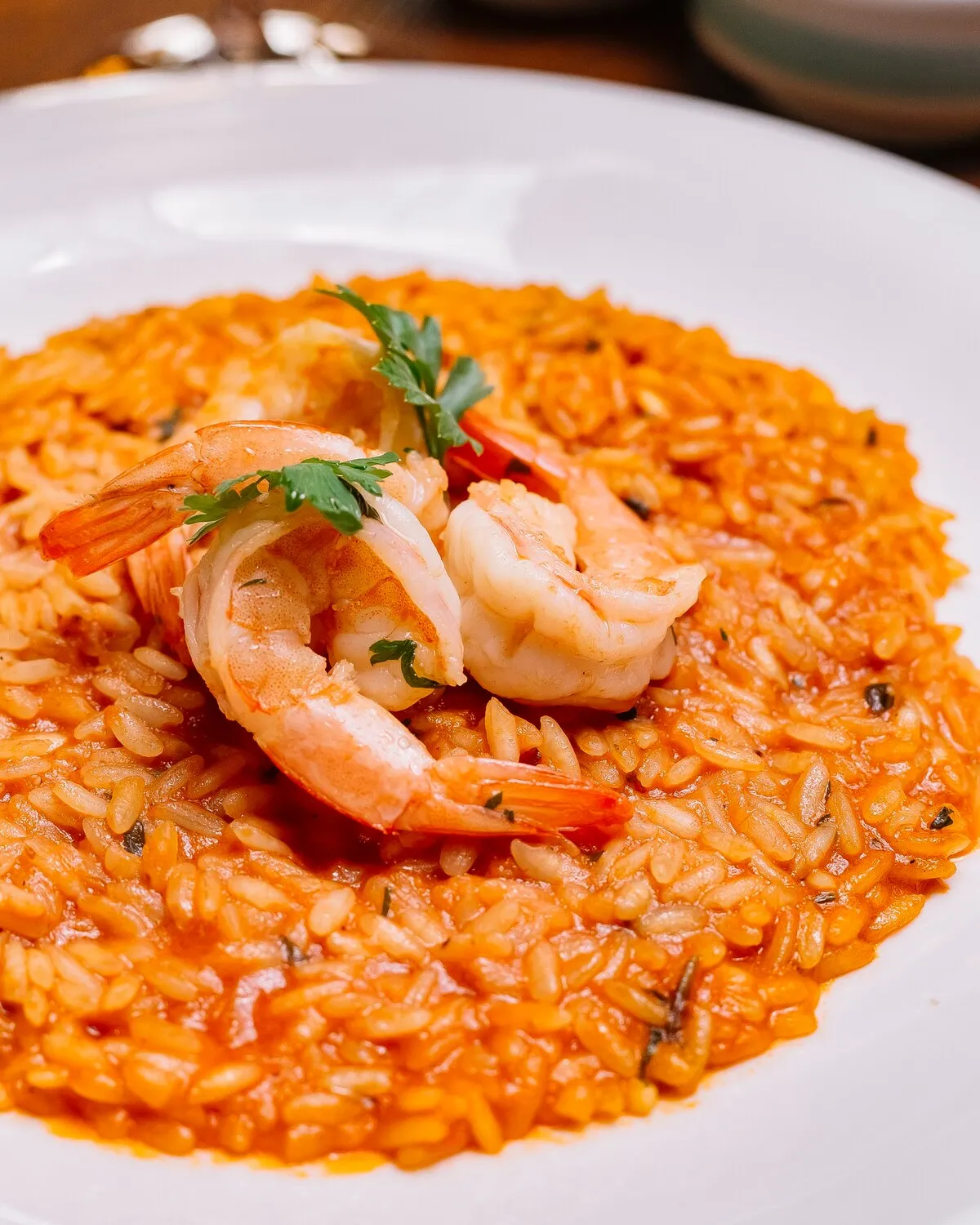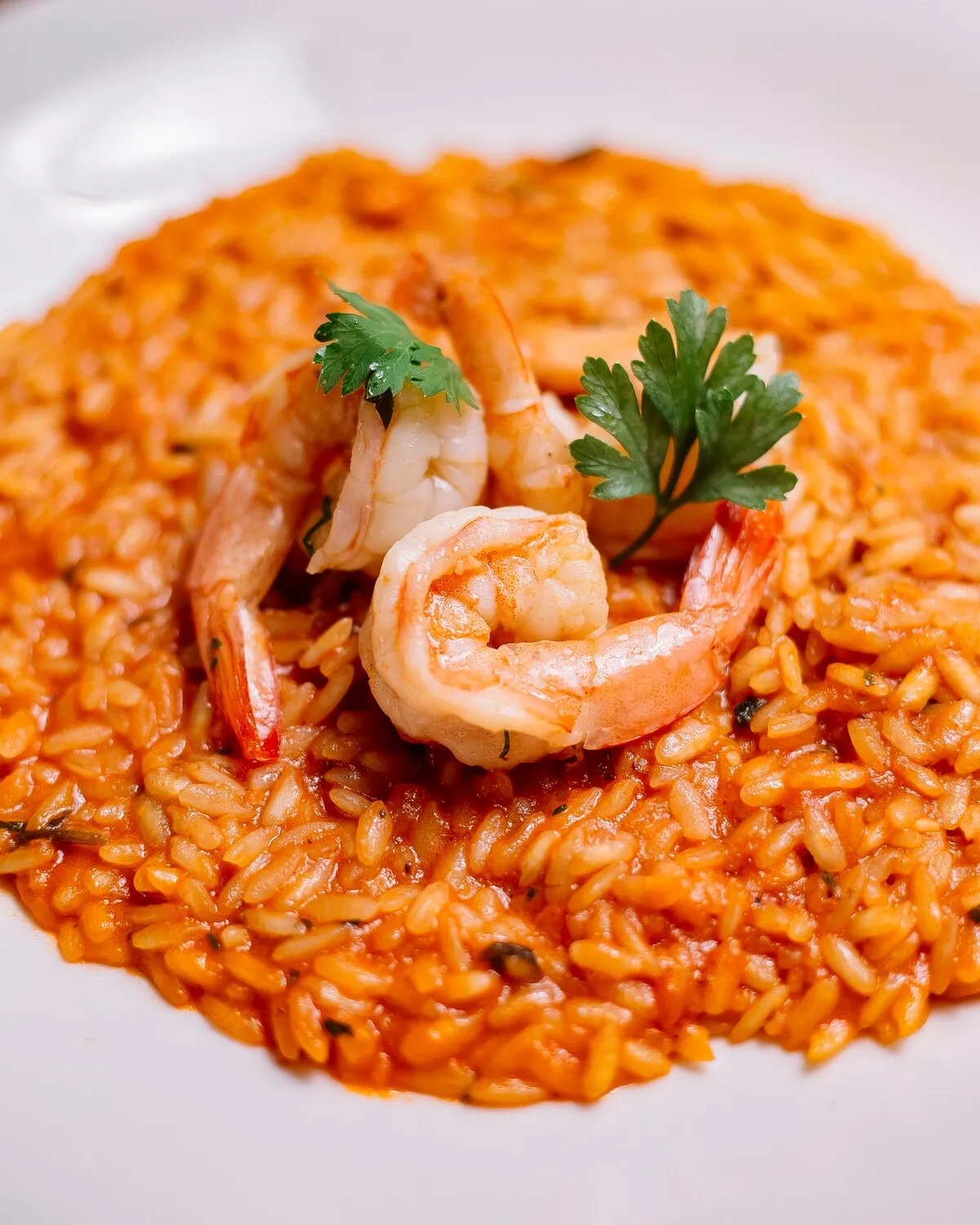
Risoto de Frutos do Mar
Seafood Risotto. It's a popular dish.
Nutrition Facts
* The % Daily Value (DV) tells you how much a nutrient in a serving of food contributes to a daily diet. 2,000 calories a day is used for general nutrition advice.
Dolce Vita Restaurante
Risotto, in general, evolved in Northern Italy, particularly in regions known for rice cultivation like Lombardy and Piedmont. The introduction of rice to Italy likely occurred during the Middle Ages, with significant cultivation taking hold by the 14th and 15th centuries. The use of seafood in risotto is a natural extension of Italian coastal cuisine, where fresh seafood is abundant and integrated into various dishes. Risotto de Frutos do Mar showcases the regional diversity and resourcefulness of Italian cooking.
Risotto de Frutos do Mar embodies the Italian emphasis on using fresh, seasonal ingredients and celebrating the bounty of the sea. It's often considered a special occasion dish due to the cost and preparation involved.
Regional Variations
The specific seafood used in Risotto de Frutos do Mar varies significantly depending on the region of Italy and the availability of local seafood. For example, regions along the Adriatic coast might feature more mussels and clams, while regions in the south might include more swordfish or tuna.
Family Traditions
Like many Italian dishes, Risotto de Frutos do Mar is often prepared and enjoyed within a family setting. Recipes are often passed down through generations, with each family adding their own unique twist.
Celebratory Meal
Due to its richness and use of expensive ingredients, Risotto de Frutos do Mar is often served at special occasions, such as Christmas Eve (La Vigilia), family gatherings, or celebrations.
Risotto de Frutos do Mar is characterized by a savory, briny flavor profile dominated by the taste of fresh seafood, balanced by the creamy richness of the risotto base.
The primary flavor comes from the combination of seafood such as shrimp, mussels, clams, scallops, and sometimes squid or octopus. These provide a salty, oceanic taste that is complemented by the subtle flavors of Arborio or Carnaroli rice, which release starch to create a creamy texture. The dish often includes garlic, white wine (contributing acidity and depth), parsley (for freshness), and olive oil (for richness). Vegetable broth (fish stock is sometimes used for added seafood intensity) provides a base of savory umami. Lemon juice may be added at the end to brighten the flavors.
Use High-Quality Rice
Arborio or Carnaroli rice are the best choices for risotto because of their high starch content, which creates the creamy texture. Carnaroli is considered superior due to its higher starch content and ability to remain al dente.
Warm Broth is Key
Always use warm broth when adding it to the rice. Cold broth will lower the temperature of the rice and prevent it from cooking evenly.
Toast the Rice
Before adding the broth, toast the rice in olive oil or butter for a few minutes. This will help to release the starch and create a nutty flavor.
Don't Overcook the Seafood
Seafood cooks quickly, so add it towards the end of the cooking process to prevent it from becoming tough and rubbery. Overcooked seafood will ruin the dish.
Stir Frequently, but Not Constantly
Stirring helps release the starch from the rice, but over-stirring can make the risotto gummy. Stir frequently and gently, allowing the rice to absorb the broth.
Explore additional Risotto dishes and restaurants
Explore RisottoDiscover top dining spots and culinary experiences in Florianópolis.
Explore FlorianópolisLearn more about the food culture, restaurant scene, and culinary heritage of Brazil.
Explore Brazil
